HP Pavilion 15 (15-cs3000) review – Ice Lake + MX250 at a very affordable price
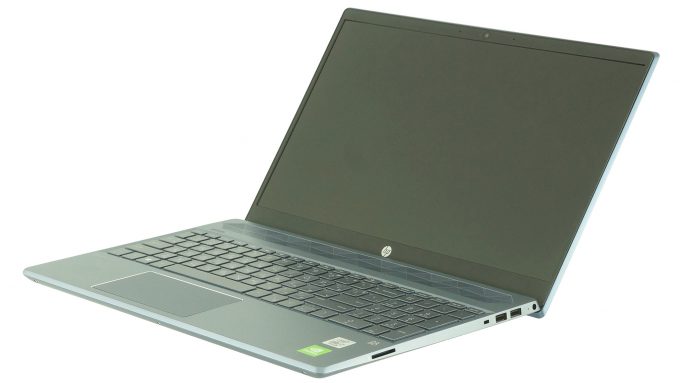 With its Pavilion 15-cs2000, HP showed a true all-rounder in terms of daily computing. It was strong enough in our view so that we gave it an Editor’s choice award, ourselves. Now, that we have the newer Pavilion 15 (15-cs3000) with us, we are eager to put it through our testing and see if the changes made by HP build on top of the strong base, or it actually makes it worse.
With its Pavilion 15-cs2000, HP showed a true all-rounder in terms of daily computing. It was strong enough in our view so that we gave it an Editor’s choice award, ourselves. Now, that we have the newer Pavilion 15 (15-cs3000) with us, we are eager to put it through our testing and see if the changes made by HP build on top of the strong base, or it actually makes it worse.
Let’s start by saying that the new model is now equipped with the 10nm Ice Lake processors from Intel. Currently, you can pick from the Core i5-1035G1 or the Core i7-1065G7. Not only you can take advantage of the improved integrated graphics of these processors, but you can also choose a version of the Pavilion 15 (15-cs3000) that includes the 4GB iteration of the GeForce MX250. Of course, we are talking about the 25W version, similar to the one on the Pavilion 15-cs2000.
You can check the prices and configurations in our Specs System: https://laptopmedia.com/series/hp-pavilion-15-15-cs3000/
Contents
Specs Sheet
- HDD/SSD
- jusqu'à 8000GB SSD + jusqu'à 2000GB HDD
- RAM
- up to 64GB
- OS
- Windows 10 Home, Windows 10 Pro
- Batterie
- 41Wh, 3-cell
- Matériau du corps
- Plastic / Polycarbonate, Aluminum
- Dimensions
- 361 x 245 x 17 mm (14.21" x 9.65" x 0.67")
- Poids
- 1.85 kg (4.1 lbs)
- Ports et connectivité
- 1x USB Type-C
- 3.2 Gen 1 (5 Gbps)
- 2x USB Type-A
- 3.2 Gen 1 (5 Gbps)
- HDMI
- 1.4b
- Lecteur de cartes
- SD
- Ethernet LAN
- 10/100/1000 Mbit/s
- Wi-Fi
- 802.11ax
- Bluetooth
- 4.2
- Prise audio
- 3.5 mm combo
- Caractéristiques
- Lecteur d'empreintes digitales
- Caméra Web
- Clavier rétro-éclairé
- optional
- Microphone
- Intervenants
- Lecteur optique
Tous HP Pavilion 15 (15-cs3000) configurations
What’s in the box?
Inside the package we found a 65W power brick, that is very small in size, as well as the mandatory paper manuals.
Design and construction
Perhaps the smaller lithography of the Ice Lake processors has enabled HP to build this laptop thinner and lighter than its predecessor. Indeed, with 17mm thickness and 1.85 kg weight is just a millimeter thinner and 70 grams lighter than the Pavilion 15-cs2000. However, when you hold it in your hands, the difference is more noticeable. The aluminum lid and plastic body mean the laptop is on par with the competition in this price range. Honestly, the build quality is not the best, as there are some squeaks when you try to twist the chassis.
Interestingly, you are able to open the lid via a single hand. Then, the hinge mechanism gets into action and lifts the notebook’s backside with the help of the bottom part of the lid. This results in improved airflow, as well as a minor increase of comfortability during typing.
Next, let’s take a look at the base. At the top-most portion of it, you can see a 3D grill that spreads from one end to the other. It houses the duo of speakers (which are placed in the edges of the grill). By the way, the B&O brandings below mean that they are tuned by Bang & Olufsen. This in combination with the direction of the sound should provide a good volume and quality.
Beneath the grill, we see the keyboard which has a great layout (with the exception of the arrow keys), as well as a full-sized NumberPad. The keys themselves are quite big in size, as are the characters printed on top of them. Keystrokes are relatively long and we find them clicky enough. Further below, there is the touchpad, which is wider than the average for a Windows machine. However, it is placed pretty close to the bottom edge of the device, so many people may find it uncomfortable at first.
Lastly, on the bottom plate, there is only one grill and it is meant for ventilation. Hot air, on the other side, is exhausted from in between the lid and the base, although there is enough room given so that the display is protected from the heat. Keep in mind, that if you work with a closed laptop, the exhaust vents are trapped inside and it will certainly lower the efficiency of Pavilion 15 (15-cs3000)’s cooling.
Ports
On the left side, there is an HDMI connector, followed by an RJ-45 connector, a USB Type-C 3.1 (Gen. 1) port and further towards the user – a headphone jack. Then, on the right, you will find the power plug, two USB Type-A 3.1 (Gen. 1) ports and an SD card reader.
Disassembly, upgrade options and maintenance
On the inside, this notebook is an exact same copy of its predecessor. So is the bottom panel, which requires the removal of the two back feet in order to access all three hidden screws. You can remove them easily with the help of a sharp plastic pry tool. By the way, be patient, when prying the bottom plate, itself, as there are some very fragile parts of the body, especially around the ports and the SD card slot.
Its cooling comprises two heat pipes that cool both the CPU and the GPU. They end in a rather long heat spreader that has two fans attached to it, that blow the heat away.
In terms of upgradability, there are two RAM DIMMs, which support 32GB of DDR4 memory with speeds of up to 2666 MHz. As of the storage – HP provides you with a 2.5″ SATA drive slot and an M.2 slot with support of NVMe drives.
Battery-wise, there is a 41Wh unit – not very impressive given the size of the device.
Display quality
HP Pavilion 15 (15-cs3000) is equipped with a Full HD IPS panel, model number AUO B156HAN02.1 (AUO21ED). Its diagonal is 15.6″ (39.62 cm), and the resolution – 1920 х 1080p. Additionally, the screen ratio is 16:9, the pixel density – 142 ppi, their pitch – 0.18 x 0.18 mm. The screen can be considered Retina when viewed from at least 60 cm (from this distance, the average human eye can’t see the individual pixels).
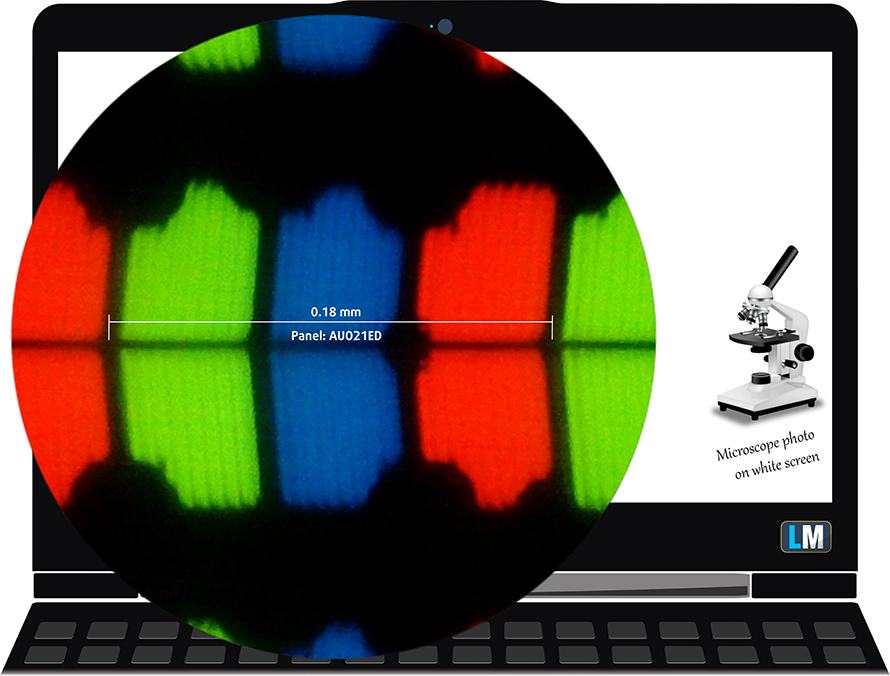
Viewing angles are good. We offer images at different angles to evaluate the quality.

The maximum measured brightness is 270 nits (cd/m2) in the middle of the screen and 262 nits (cd/m2) average across the surface with a maximum deviation of 8%. The Correlated Color Temperature on a white screen and at maximum brightness is 6380K (average) – slightly warmer than the 6500K optimum for sRGB. The average color temperature through the grey scale before profiling is 6200K.
In the illustration below you can see how the display performs from uniformity perspective. The illustration below shows how matters are for operational brightness levels (approximately 140 nits) – in this particular case at 60% Brightness (White level = 141 cd/m2, Black level = 0.1 cd/m2).
Values of dE2000 over 4.0 should not occur, and this parameter is one of the first you should check if you intend to use the laptop for color-sensitive work (a maximum tolerance of 2.0 ). The contrast ratio is very good – 1380:1.
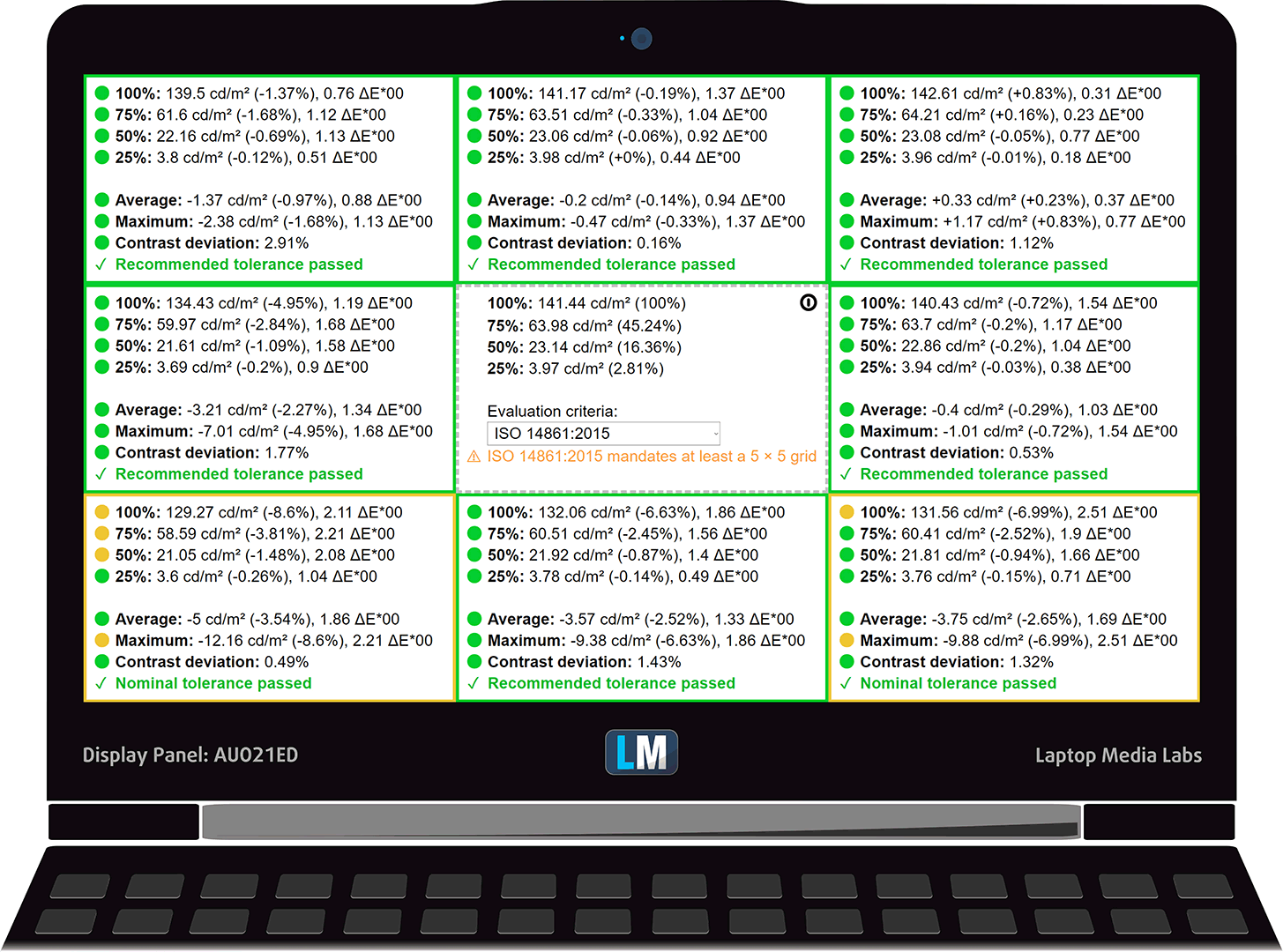
To make sure we are on the same page, we would like to give you a little introduction to the sRGB color gamut and the Adobe RGB. To start, there’s the CIE 1976 Uniform Chromaticity Diagram that represents the visible specter of colors by the human eye, giving you a better perception of the color gamut coverage and the color accuracy.
Inside the black triangle, you will see the standard color gamut (sRGB) that is being used by millions of people in HDTV and on the web. As for the Adobe RGB, this is used in professional cameras, monitors, etc for printing. Basically, colors inside the black triangle are used by everyone and this is the essential part of the color quality and color accuracy of a mainstream notebook.
Still, we’ve included other color spaces like the famous DCI-P3 standard used by movie studios, as well as the digital UHD Rec.2020 standard. Rec.2020, however, is still a thing of the future and it’s difficult for today’s displays to cover that well. We’ve also included the so-called Michael Pointer gamut, or Pointer’s gamut, which represents the colors that naturally occur around us every day.
The yellow dotted line shows HP Pavilion 15 (15-cs3000)’s color gamut coverage.
Its display covers 52% of the sRGB/ITU-R BT.709 (web/HDTV standard) in CIE1976.
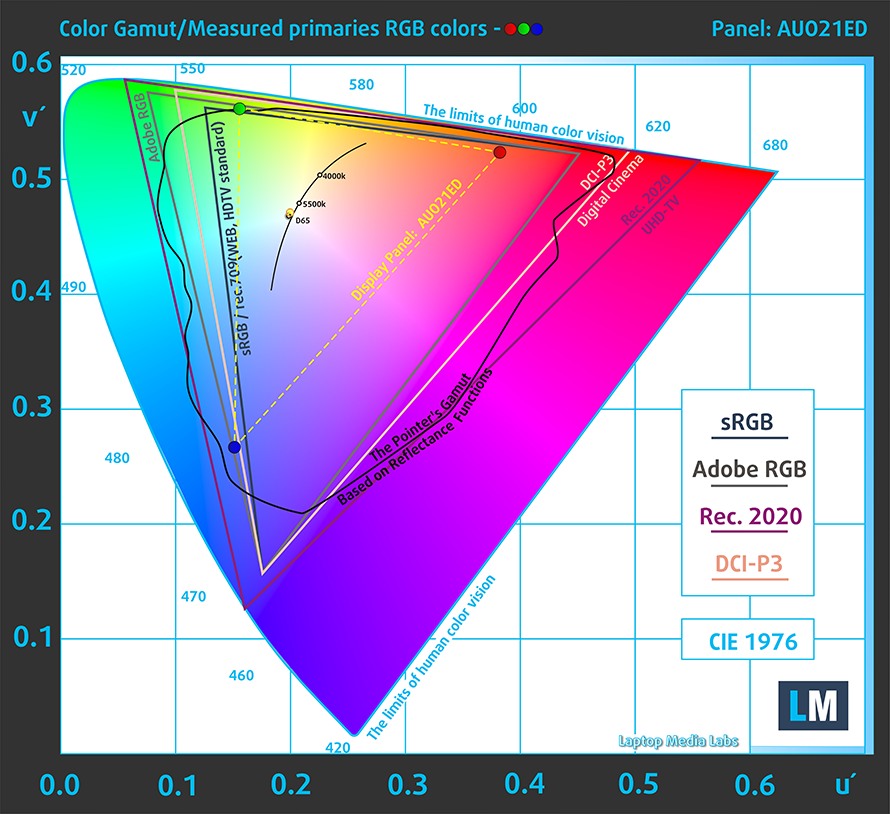
Our “Design and Gaming” profile delivers optimal color temperature (6500K) at 140 cd/m2 luminance and sRGB gamma mode.
We tested the accuracy of the display with 24 commonly used colors like light and dark human skin, blue sky, green grass, orange, etc. You can check out the results at factory condition and also, with the “Design and Gaming” profile.
Below you can compare the scores of HP Pavilion 15 (15-cs3000) with the default settings (left), and with the “Gaming and Web design” profile (right).
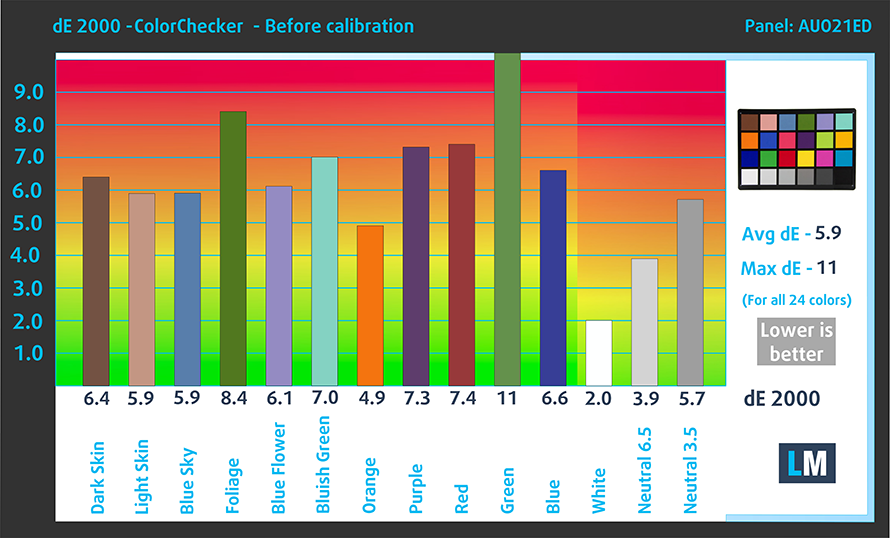
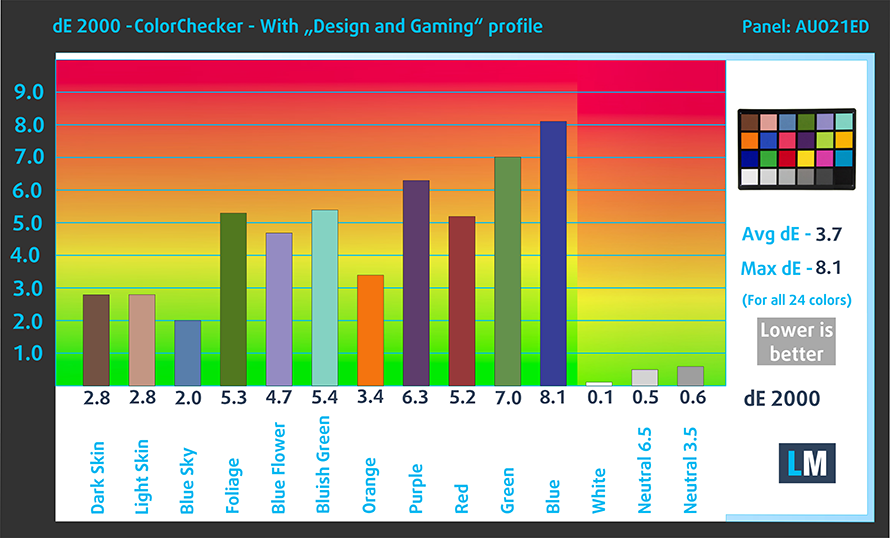
The next figure shows how well the display is able to reproduce really dark parts of an image, which is essential when watching movies or playing games in low ambient light.
The left side of the image represents the display with stock settings, while the right one is with the “Gaming and Web Design” profile activated. On the horizontal axis, you will find the grayscale and on the vertical axis – the luminance of the display. On the two graphs below you can easily check for yourself how your display handles the darkest nuances but keep in mind that this also depends on the settings of your current display, the calibration, the viewing angle, and the surrounding light conditions.
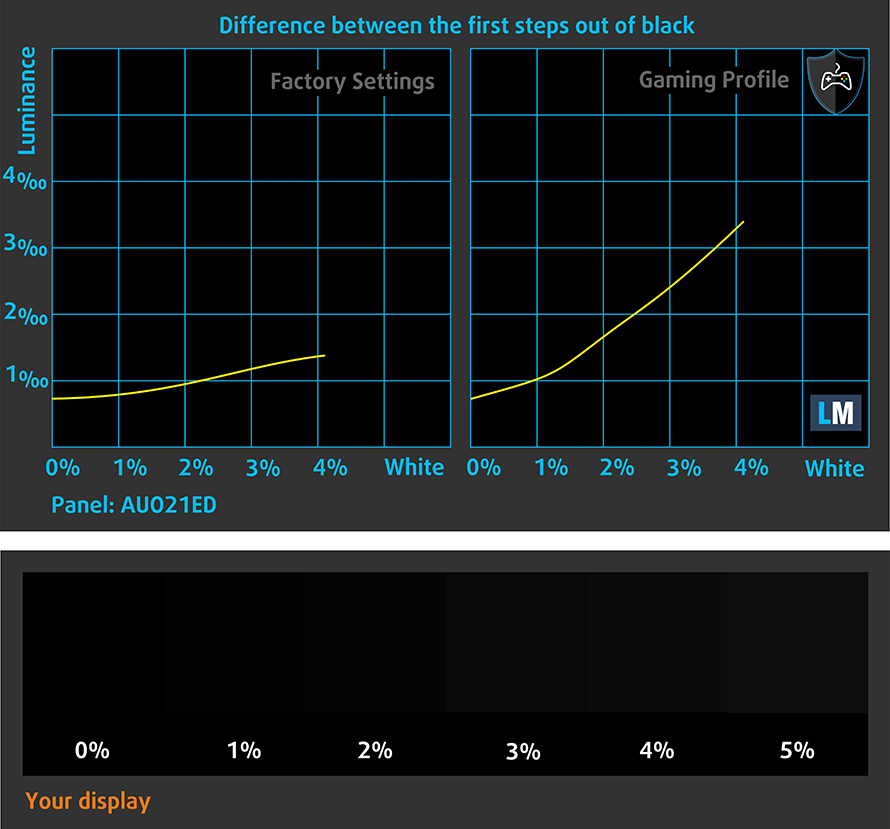
Response time (Gaming capabilities)
We test the reaction time of the pixels with the usual “black-to-white” and “white-to-black” method from 10% to 90% and vice versa.
We recorded Fall Time + Rise Time = 31 ms.

Health impact – PWM / Blue Light
PWM (Screen flickering)
Pulse-width modulation (PWM) is an easy way to control monitor brightness. When you lower the brightness, the light intensity of the backlight is not lowered, but instead turned off and on by the electronics with a frequency indistinguishable to the human eye. In these light impulses, the light/no-light time ratio varies, while brightness remains unchanged, which is harmful to your eyes. You can read more about that in our dedicated article on PWM.
HP Pavilion 15 (15-cs3000)’s display doesn’t use PWM to adjust its brightness levels at any point. This makes it comfortable for long use periods, without harming your eyes in this aspect.

Blue light emissions
Installing our Health-Guard profile not only eliminates PWM but also reduces the harmful Blue Light emissions while keeping the colors of the screen perceptually accurate. If you’re not familiar with the Blue light, the TL;DR version is – emissions that negatively affect your eyes, skin and your whole body. You can find more information about that in our dedicated article on Blue Light.
Conclusions
HP Pavilion 15 (15-cs3000) has an IPS panel with a Full HD resolution, comfortable viewing angles and good contrast ratio – two significant features of the IPS nature of the display. Additionally, it doesn’t use PWM for brightness adjustment. Sadly, the modest color coverage is a disadvantage.
Buy our profiles
Since our profiles are tailored for each individual display model, this article and its respective profile package are meant for HP Pavilion 15 (15-cs3000) configurations with 15.6″ AUO B156HAN02.1 (AUO21ED), (FHD, 1920 × 1080) IPS.
*Should you have problems with downloading the purchased file, try using a different browser to open the link you’ll receive via e-mail. If the download target is a .php file instead of an archive, change the file extension to .zip or contact us at [email protected].
Read more about the profiles HERE.
En plus de recevoir des profils efficaces et favorables à la santé, en achetant les produits de LaptopMedia, vous soutenez également le développement de nos laboratoires, où nous testons les appareils afin de produire les examens les plus objectifs possibles.

Travail de bureau
Le travail de bureau devrait être utilisé principalement par les utilisateurs qui passent le plus de temps à regarder des morceaux de texte, des tableaux ou simplement à surfer. Ce profil vise à offrir une meilleure distinction et une meilleure clarté en conservant une courbe gamma plate (2,20), une température de couleur native et des couleurs perceptuellement précises.

Conception et jeux
Ce profil est destiné aux designers qui travaillent avec les couleurs de manière professionnelle, et pour les jeux et les films également. Design and Gaming pousse les panneaux d'affichage à leurs limites, les rendant aussi précis que possible dans la norme sRGB IEC61966-2-1 pour le Web et la TVHD, au point blanc D65.

Santé-Guard
Santé-Guard élimine le modulation de largeur d'impulsion nocive (PWM) et réduit le lumière bleue négative qui affecte nos yeux et notre corps. Comme il est adapté à chaque panneau, il parvient à maintenir la précision perceptive des couleurs. Santé-Guard simule le papier, ce qui réduit considérablement la pression sur les yeux.
Obtenez les 3 profils avec 33% de réduction
Sound
HP Pavilion 15 (15-cs3000) produces a good quality sound with a medium-high maximum volume. Its speakers are tuned by Bang & Olufsen, and the tones are clear throughout the entire frequency range.
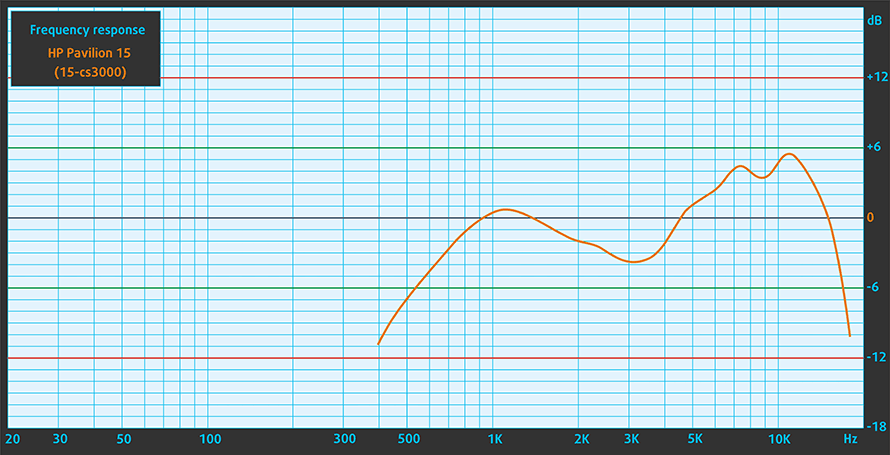
Drivers
You can download all of the drivers and utilities for this notebook from here: https://support.hp.com/us-en/drivers/selfservice/hp-pavilion-15-cs3000-laptop-pc-series/29133460
Battery
Now, we conduct the battery tests with Windows Better performance setting turned on, screen brightness adjusted to 120 nits and all other programs turned off except for the one we are testing the notebook with.
Afin de simuler des conditions réelles, nous avons utilisé notre propre script de navigation automatique sur plus de 70 sites web.

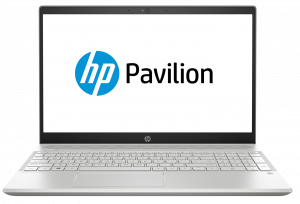
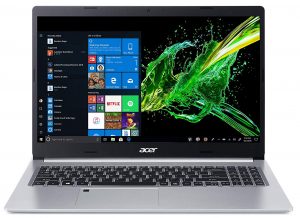
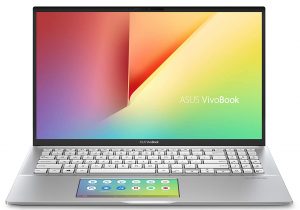
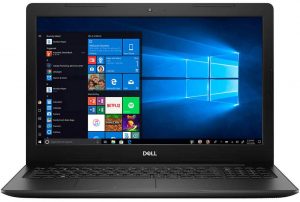
Pour chaque test de ce type, nous utilisons la même vidéo en HD.





CPU options
As of right now, you can buy this notebook with either the Core i5-1035G1 or the Core i7-1065G7.
Les résultats proviennent du test CPU Cinebench 20 (plus le score est élevé, mieux c'est).
Les résultats sont issus de notre test de référence Photoshop (plus le score est bas, mieux c'est)
GPU options
Respectively, depending on the CPU you choose, you will get it with either the Intel UHD Graphics or the Iris Plus Graphics G7 on board. Additionally, HP offers you the opportunity to fit it with the GeForce MX130, or the MX250.
Les résultats proviennent du benchmark 3DMark : Time Spy (Graphics) (plus le score est élevé, mieux c'est).
Les résultats proviennent du benchmark 3DMark : Fire Strike (Graphics) (plus le score est élevé, mieux c'est).
Les résultats proviennent du benchmark Unigine Superposition (plus le score est élevé, mieux c'est).
Gaming tests
These tests were performed with the 441.66 drivers from NVIDIA.

| CS:GO | HD 1080p, Low (Check settings) | HD 1080p, Medium (Check settings) | HD 1080p, MAX (Check settings) |
|---|---|---|---|
| NVIDIA GeForce MX250 | 130 fps | 111 fps | 86 fps |

| DOTA 2 | HD 1080p, Low (Check settings) | HD 1080p, Normal (Check settings) | HD 1080p, High (Check settings) |
|---|---|---|---|
| NVIDIA GeForce MX250 | 94 fps | 76 fps | 62 fps |
Temperatures and comfort
Max CPU load
In this test we use 100% on the CPU cores, monitoring their frequencies and chip temperature. The first column shows a computer’s reaction to a short load (2-10 seconds), the second column simulates a serious task (between 15 and 30 seconds), and the third column is a good indicator of how good the laptop is for long loads such as video rendering.
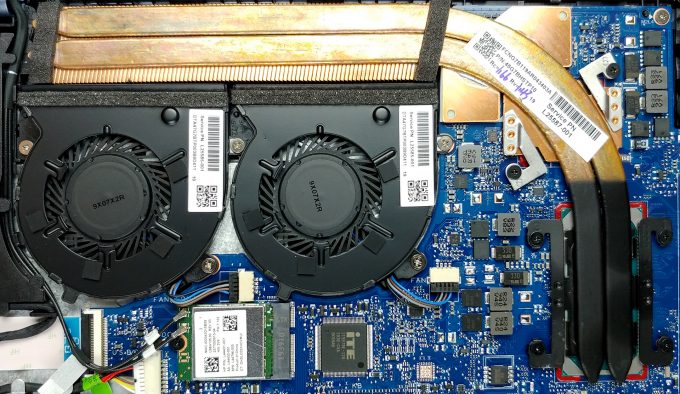
Average core frequency (base frequency + X); CPU temp.
| Intel Core i7-1065G7 (15W TDP) | 0:02 – 0:10 sec | 0:15 – 0:30 sec | 10:00 – 15:00 min |
|---|---|---|---|
| HP Pavilion 15 (15-cs3000) | 2.94 GHz (B+96%) @ 93°C | 2.03 GHz (B+35%) @ 77°C | 1.91 GHz (B+27%) @ 67°C |
| Dell Inspiron 15 3593 | 2.78 GHz (B+85%) @ 97°C | 2.31 GHz (B+54%) @ 93°C | 2.04 GHz (B+30%) @ 90°C |
In comparison to the Inspiron 15 3593, we see slightly lower frequencies, but they come with the advantage of super cool temperatures, given the stress load. We have to note that the fans are not spinning with full power, however, they occasionally produce a noise similar to an old fridge.
Real-life gaming
| NVIDIA GeForce MX250 | GPU frequency/ Core temp (after 2 min) | GPU frequency/ Core temp (after 30 min) |
|---|---|---|
| HP Pavilion 15 (15-cs3000) | 1610 MHz @ 74°C | 1544 MHz @ 74°C |
| HP Pavilion 15-cs2000 | 1683 MHz @ 73°C | 1617 MHz @ 74°C |
| Acer Aspire 5 (A515-54G) | 1297 MHz @ 74°C | 1139 MHz @ 74°C |
| Lenovo Ideapad S540 (15) | 1608 MHz @ 69°C | 1404 MHz @ 59°C |
| ASUS VivoBook S15 S532 | 1708 MHz @ 77°C | 1480 MHz @ 67°C |
Interestingly, here, we see a lower frequency on the newer notebook, in comparison to its predecessor. Still, after 30 minutes of gaming, both of them work at higher clock speeds, compared to the competition.
Gaming comfort
The fans are clearly audible during gaming. However, they are not overly intrusive, whatsoever.
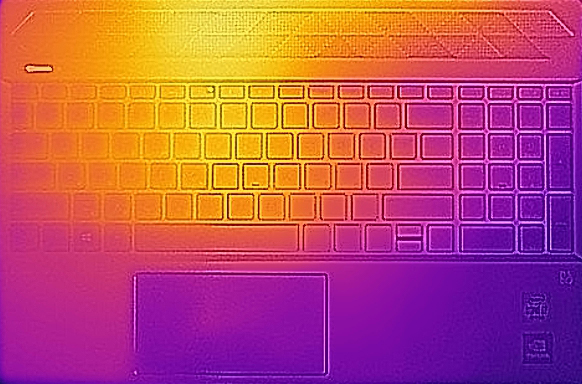
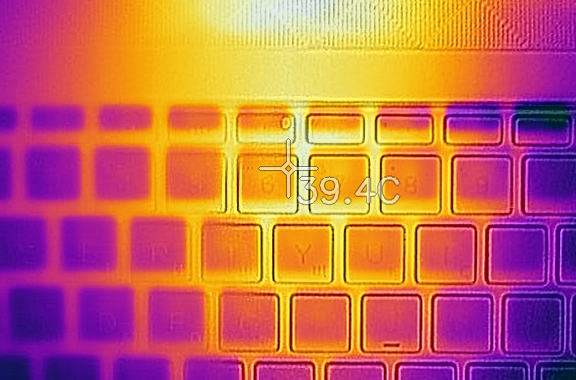
Verdict
In the grand scheme of things, the Pavilion 15 (15-cs3000) is not very different from the Pavilion 15-cs2000. It performs similarly in day-to-day usage tasks, as well as in high-performance scenarios. However, its body is slimmer and ever so slightly lighter, which actually can be felt when you have the laptop in your hands.
Other than that, everything seems the same – from the picture in the inside to the way the body squeaks when handled by the edges. Additionally, we see a comfortable keyboard with decent key travel and big-enough keycap size.
HP Pavilion 15 (15-cs3000) has an IPS panel with a Full HD resolution, comfortable viewing angles and good contrast ratio – two significant features of the IPS nature of the display. Additionally, it doesn’t use PWM for brightness adjustment. Sadly, the modest color coverage is a disadvantage.
Interestingly, we see slightly worse battery life, compared to its predecessor. This is weird since the new model is fitted with the brand new 10nm Ice Lake CPUs, whereas the Pavilion 15-cs2000 has the Whiskey Lake CPUs on board.
Certainly, when you compare it to the VivoBook S15 S532, it lacks innovation and presents itself in a good old clamshell design, that only establishes itself as a 2019/2020 model thanks to its narrow bezels and intriguing hinge design. Additionally, we would love to give it an Editor’s choice award, but we could only do so, if it wasn’t for one specific laptop – the HP Pavilion 15-cs2000 – its predecessor. It pretty much offers the same thing at a lower price.
Pros
- Upgradability is on point
- GeForce MX250 and Ice Lake CPUs at a good price
- Decent keyboard
- Its display doesn’t use PWM to adjust its brightness levels
- Fits NVMe drives and has an SD card slot
Cons
- Covers only 52% of sRGB
- Its predecessor is essentially the same laptop but at a lower cost
You can check the prices and configurations in our Specs System: https://laptopmedia.com/series/hp-pavilion-15-15-cs3000/
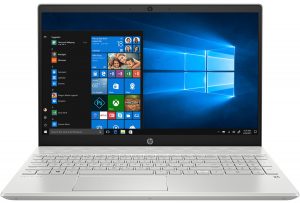

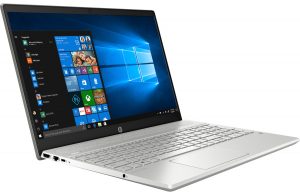
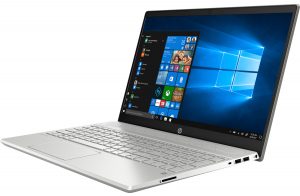
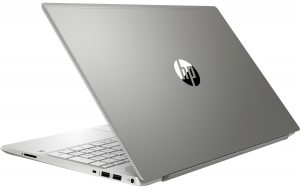

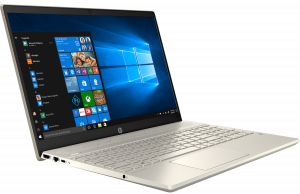



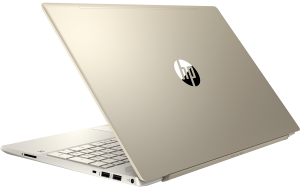

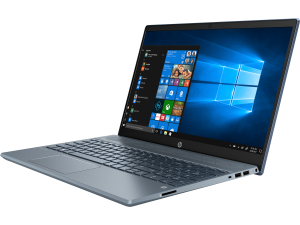




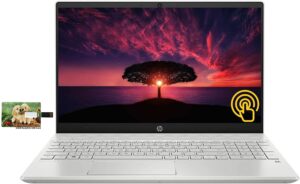
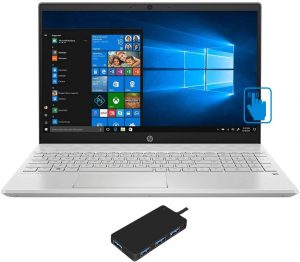
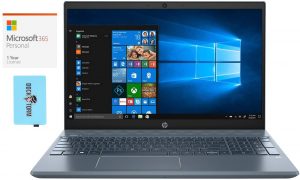
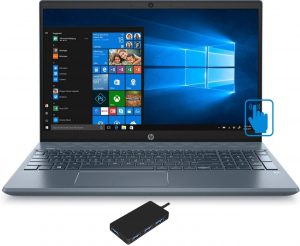
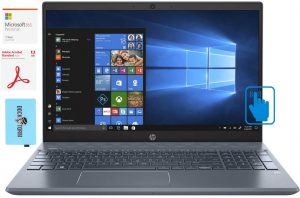
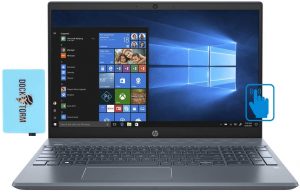
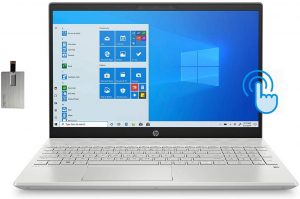
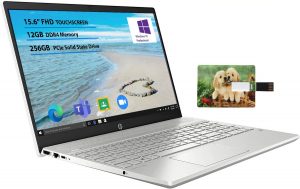
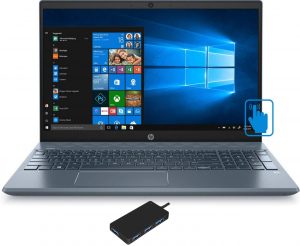
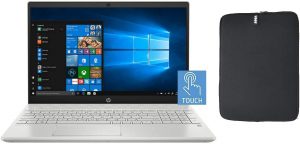
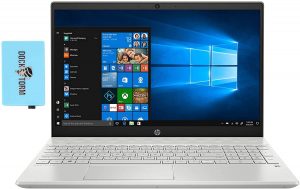
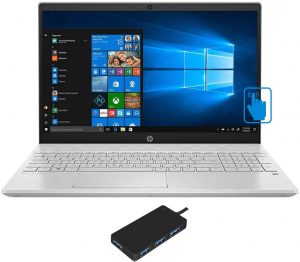
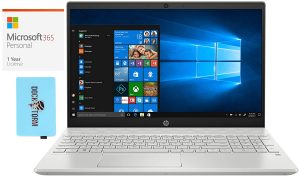


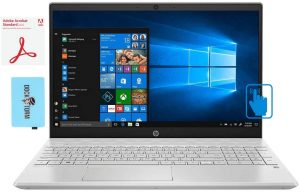

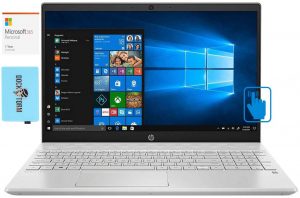
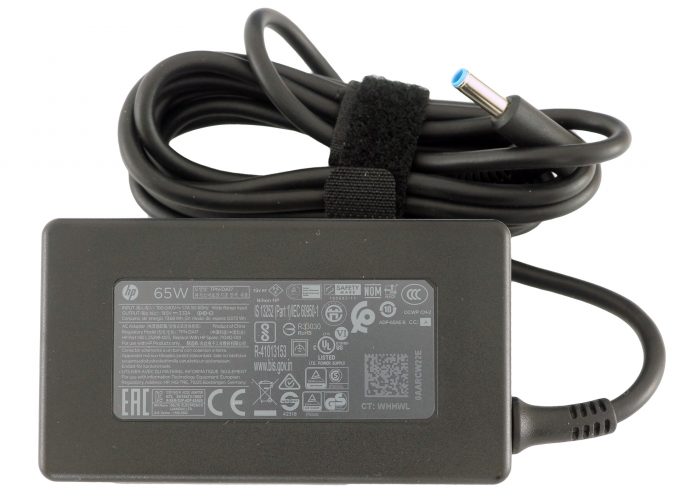
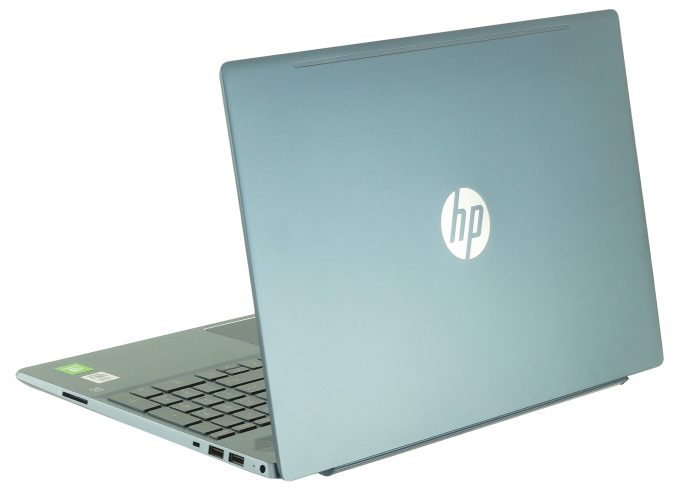

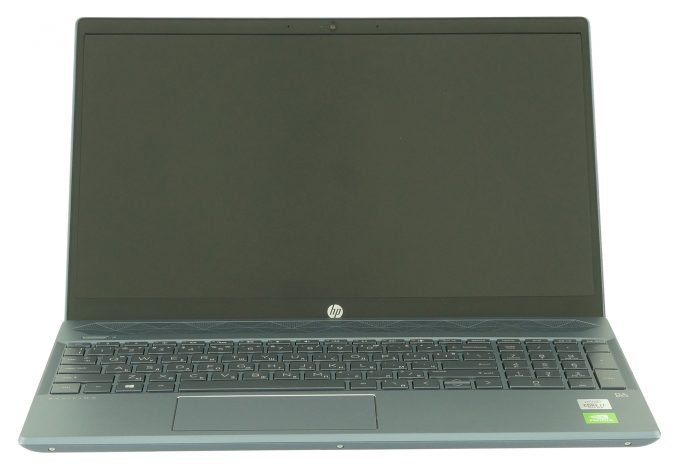
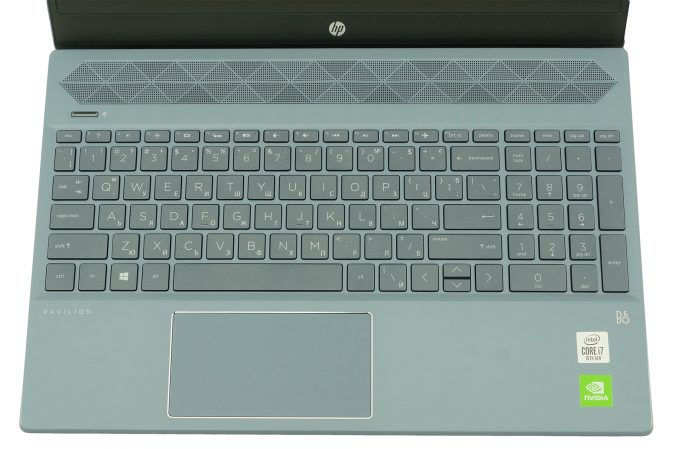
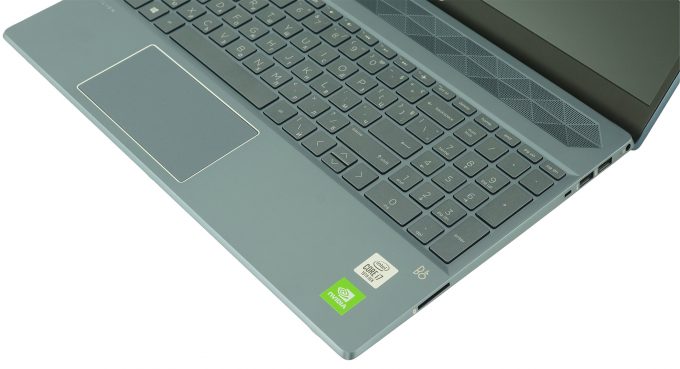
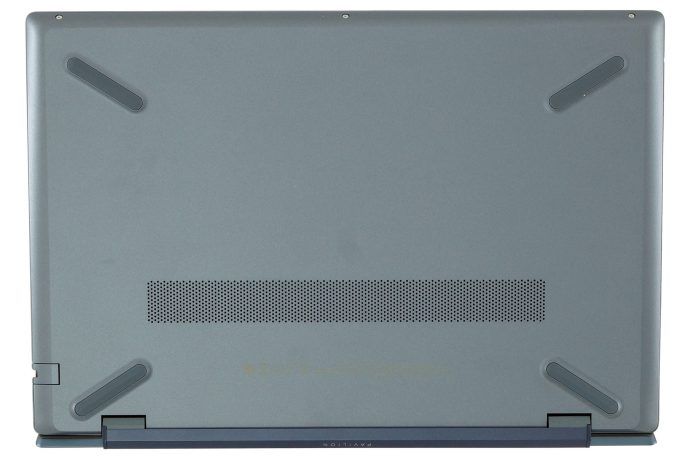


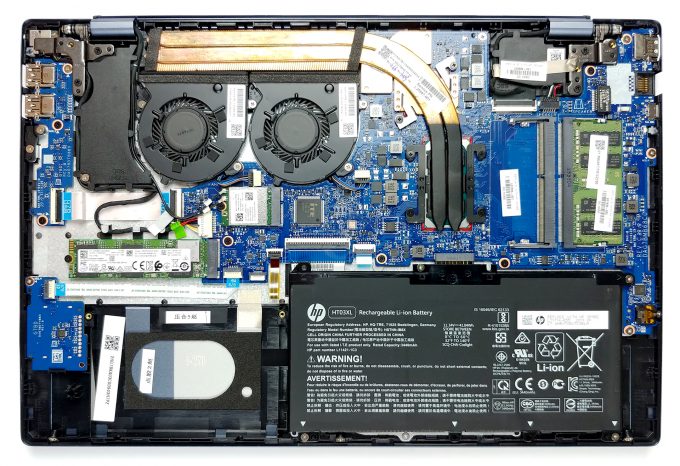

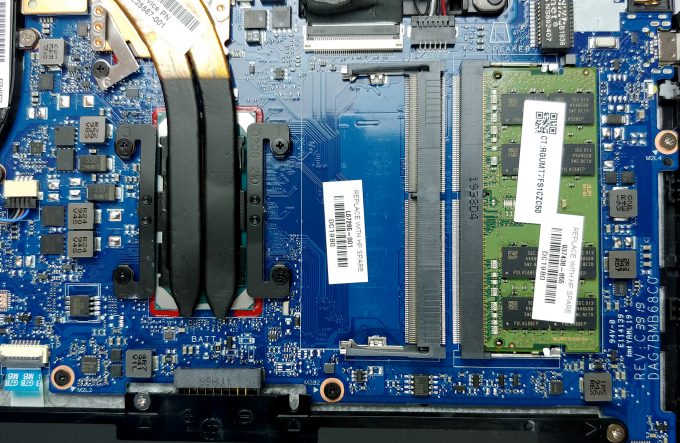
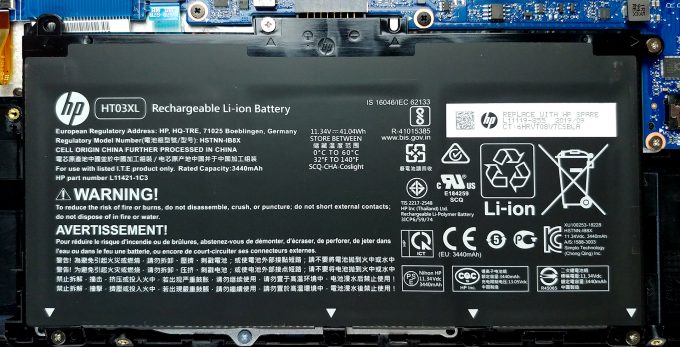

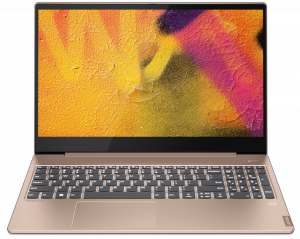








It’s the weirdest Russian keyboard layout I’ve ever seen. Do they really sell it like this?